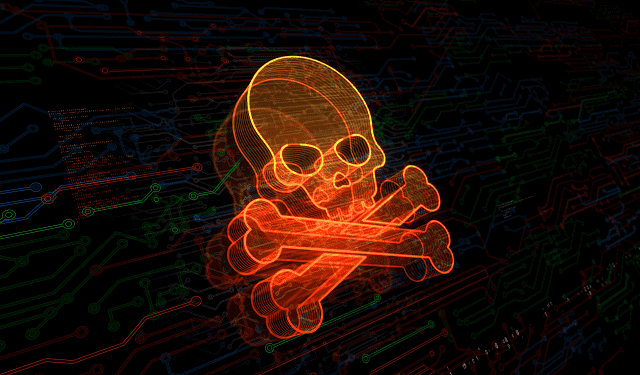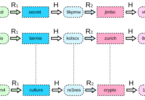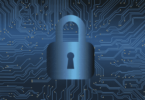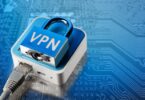RATs or Remote Access Trojan refer to the program, which can help hackers to gain unauthorized access to the computers of the targeted person. These Trojans allow the automated collection of usernames, keystrokes, screenshots, passwords, chat logs, emails, browser history, etc., in order to mimic the behaviors of keylogger apps.
What differentiates RATs from keyloggers is that these can offer the ability to cyber attackers to gain unauthorized remote access through configured communication protocols to the victim machine. These protocols are set up upon the victim PC’s initial infection. Let’s dig into the article to learn what is a RAT (Remote Access Trojan), and more about this.
What is a RAT (Remote Access Trojan)?
RAT is malware that is used by attackers in order to gain full administrative privileges and control the target PC remotely. Victims often download RATs, along with several legitimate users-requested Programs. Or, these are usually sent to the victims through a phishing email as an email attachment.
As soon as the host system is compromised, a backdoor is used by intruders to control the host. They are capable of distributing RATs to vulnerable PCs and set up a botnet. RATs belong to the family of Trojan horse viruses, and the specific design of RATs allows them to remain disguised as legitimate content.
History of RAT:
Although the full history of RATs is unknown, hackers have been using these continuously for many years in order to allow attackers to set up a foothold on a victim’s PC. There are several popular as well as well-established RATs, including the SubSeven, Back Orifice, etc. These date to the mid to late 1990s. You can still see these programs being used to this day.
When these applications are used successfully, it can result in several applications being made in the subsequent decades. While security companies become conscious of the tactics are being used by RATs, malware authors are trying to evolve their products continuously to thwart the newest detection mechanisms.
Common Infection Method:
RATs can be installed in several ways or techniques. These can be similar to other malware infection vectors. Web links, crafted email attachments, download packages, or .torrent files are possible to be used as a mechanism for software installation. Cyber attackers can deceive targets into installing software through social engineering tactics or via your PC’s temporary physical access.
How Does A Remote Access Trojan Work?
Like other malware, RATs are capable of infecting PCs. While hackers can attach them to an email, they can host these on a malicious website. Besides, in an unpatched machine, cyber attackers can exploit vulnerability.
The design of RATs enables hackers to control a PC remotely, just like RDP or Remote Desktop Protocol, and TeamViewer is used for system administration or remote access. The Remote Access Trojan is going to set up a command & and control (C2) channel with the server of the attackers over which it will be possible to send the commands to the RAT & data will be sent back. The Trojans come with a set of built-in commands & have methods to hide their C2 traffic from detection.
You should know that Trojans can be bundled with extra functionality or available in such a design with a modular fashion that offers extra capabilities as necessary. For instance, hackers can use a RAT to gain a foothold, and after completing the exploration of a machine using Remote Access Trojan, they can decide to install a keylogger on the infected machine. The Trojan can come with this default functionality, and it can be designed for downloading as well as adding a keylogger module as required or can download and launch an independent keylogger.
Why Are Remote Access Trojans A Threat?
Remote Access Trojans are challenging to detect as you usually do not see them in the list of running tasks or programs. Their performed actions are similar to those of the legitimate applications. Additionally, an intruder manages the resource level to ensure that a performance drop never alerts the user that something is amiss.
It is not like other cybersecurity threat vectors. RATs are dangerous, even after being removed from a system. You can use them to modify files as well as hard drives. Besides, these can record user passwords, change data, etc., via keylogging & screen captures.
A RAT endangers systems, users & organizations in the following ways:
Spying and Blackmail Attempts:
Threat actors deploy a RAT to access the microphone and camera of the victim’s Smartphone & compromise their privacy. They are able to take photos of users & other surroundings in order to carry out attacks in the future. Hackers can also blackmail users so that they can agree to provide ransom money or their top-secret data.
Cryptomining:
For cyber attackers, it is very common to use these Trojans in order to mine Bitcoin on the victims’ computers. They distribute the Trojans across many devices to create huge earrings.
Distributed Denial-of-service (DDoS) Attacks:
Cyber attackers deploy Trojans on multiple devices for carrying out a DDoS attack, and to do so, they have to flood a target server with forged traffic. You should know that a DDoS attack can degrade the performance level. But generally, as a user, you will not be able to know that your device is used for carrying out such attacks.
Remote File Storage:
Cyber attackers use a RAT to make sure their operations & accounts are not shut down in order to store illegitimate content on the device of the targeted user instead of on their storage servers.
Industrial System Compromise:
These Trojans are deployed by threat actors to control huge industrial systems like water & electricity. Causing widespread damage to industrial machinery is the target of the cyber attacks. Besides, they aim to disrupt critical services to some specific geographical areas.
How To Detect Remote Access Trojans:
Remote Access Trojans are really good at evading detection, sometimes, even strong antivirus software can’t detect them. These are the five signs which you should observe to detect Remote Access:
Failure Of Antivirus Program:
If an antivirus program is crashing or responding slowly, it can signify an infection.
Slow System Performance:
These Trojans usually consume a lot of processing power, and run in the background. If the computer runs slower without any apparent reason, it may happen that the computer is infected by RAT.
Website Redirects:
When you see that the webpages are unable to load or browser requests are constantly redirected, it indicates a sign of the Trojan’s infection.
Unidentifiable Files:
If you think that any file or program looks unrecognizable, or you didn’t download or install it, then you have to observe keenly. The reason is that it might have connections with the Trojan virus.
Operational Webcam:
If a program accesses a webcam, like for video conferencing apps, the indicator light on a webcam gets turned on. If the indicator light is on without any reason, it will indicate a sign of a RAT infection.
Common Examples Of Remote Access Trojans:
Back Orifice:
It is a popular example of Remote Access Trojans. There is a hacker group which is called the Cult of the Dead Cow, made Back Orifice, in order to expose the security deficiencies of Microsoft’s Windows OS.
KjW0rm:
This word is written in VBS, and because of this, it becomes challenging to detect on Windows machines. This one uses obfuscation so that any antivirus can not detect it. KjW0rm is deployed silently. After that, it opens a backdoor that allows hackers to have full control over a machine. Hackers are also capable of sending data back to the C&C server.
Beast:
Remote Access Trojans take the help of a client-server architecture. Despite being developed in 2002, people still use it today in order to target new & old Windows systems.
Sakula:
It is called Sakurel and Viper, and emerged in 2012. This Trojan was used in targeted attacks throughout 2015. It is used by threat actors for running interactive commands and downloading & executing extra components.
AlienSpy:
It targets Apple OS X & macOS platforms. While this one is used to collect information about the system that is targeted, it also activates the webcam. AlienSpy allows hackers to securely connect to the C&C server so that they can control the machine. It uses anti-analysis techniques with the help of which it is capable of detecting if there is any virtual machine.
Sub7:
Sub7 operates in a client-server model. The client indicates a GUI, which the attacker uses to control the remote system. Whereas the server refers to the component that is deployed on a victim machine. The server tries to install itself into the Windows directory. As soon as it is deployed, this RAT enables webcam capture, chat, port redirection, etc. In addition, it offers a simple-to-use registry editor.
Blackshades:
This Remote Access Trojan can be spread by sending links to the social media contacts of the infected user. After that, blackshades use infected machines as botnets in order to launch a DDoS attack.
CrossRAT:
CrossRAT is difficult to discover. Usually, CrossRAT targets OSes like Linux, Windows, macOS & Solaris.
Saefko:
It is written in .NET. This RAT stays in the background. Besides, it can let hackers see the browser history of a user so that they can steal transaction data related to cryptocurrency.
Heseber BOT:
It is based on VNC, which is a traditional remote access tool. VNC is used by Heseber BOT in order to control over the targeted machine remotely. VNC also helps to transfer data to the C&C server.
But it never grants any administrative access over the machine unless you have any permissions. Several antivirus tools can not detect Haseber as VNC is a legitimate tool.
Mirage:
This malware is called an APT. A state-sponsored Chinese hacking group runs this type of malware. This group can carry out the data exfiltration tasks against military & government targets.
Dark Comet:
It was detected first in 2011 & is still used actively. Dark Comet grants full administrative control over the machines that are infected. Besides, it disables the firewall, Task Manager, & UAC or user access control on the Windows machines. Encryption is used by this RAT in order to evade detection by antivirus.
Agent.BTZ/ComRat:
It is known as Uroburos. This is one of the RATs which targets ICS. People think that the Russian government has developed this. Hence, encryption, anti-analysis, and forensic techniques are used by Agent.BTZ/ComRat so that nothing can detect it. ComRat is also deployed through phishing attacks. It is capable of offering full administrative control over an infected machine. In addition, it helps to exfiltrate data back to its C&C server.
Havex:
This one targets ICS or industrial control systems. Attackers can get full control over this industrial machinery using Havex. This one uses many mutations, which ensures that it can not be detected. Besides, it has a minimal footprint on the victim’s device. Havex is able to communicate with the C&C server over HTTP & HTTPS.
How To Protect Against A Remote Access Trojan:
The design of the remote access Trojans allows them to hide on infected machines. It offers secret access to attackers. They piggyback malicious functionality to accomplish it on a legitimate app. For instance, a business app or a pirated video game can be available for free because of being modified to add malware.
There are a few procedures following which you can protect your system against a RAT.
Focus On Infection Vectors:
Like other malware, remote access Trojans can be harmful when you install them and when these will be executed on a target computer. You should deploy anti-phishing & secure browsing solutions, along with the patching systems, to decrease the RAT risk. Thus, it becomes more challenging for the RAT to infect any PC.
Look For Abnormal Behavior:
These Trojans can commonly masquerade as legal apps. Besides, these can be composed of malicious functionality added to a real app. You need to monitor apps for abnormal behavior, like notepad.exe, which can create network traffic.
Use An Intrusion Detection System:
It lets you monitor network traffic and is useful when you are willing to detect any suspicious activity or anomaly in the network. It is true that several RATs have evolved to avoid detection. But some specific IDSes and APT or advanced persistent threat tools can help you a lot. The reason is that these let you detect abnormal patterns of behavior, like a mouse and keyboard, which are acting strangely or prompting commands on their own.
Employ The Principle Of Least Privilege:
POLP, or the principle of least privilege, is one of the computer security concepts that can promote minimal access to systems & resources. The least amount of privilege, which is needed for a job will be granted initially, and will be scaled up as required. The limited access works as a roadblock to threat actors from having complete control over the system.
Monitor Network Traffic:
Trojans allow hackers to control an infected computer remotely over the network by sending commands & receiving the results. You need to find any anomalous network traffic that can be linked to these communications.
Implement Least Privilege:
Least Privilege’s principle states that systems, users, applications, etc, need to have the access & permissions that they require to accomplish the task. You need to implement & enforce least privilege in order to limit the achievements of attackers using a RAT.
Deploy Multi-Factor Authentication (MFA):
Remote Access Trojans usually steal usernames & passwords for online accounts. If you deploy MFA, it will reduce the impact level of credential compromises.
Disconnect Devices:
Your first task should always be to disconnect devices from the network once you detect suspicious activity or the presence of any remote access Trojan. It serves the remote connection of the installed Trojan from the attacker to prevent extra malicious takes.
Update Antivirus And Firewalls:
You should update antivirus software & firewalls. In addition, it is necessary to refrain from opening attachments or downloading programs that are from a non-trusted source. You need to block the unused ports, track outgoing traffic & disable idle services at the administrative level.
Avoid Suspicious Links And Attachments:
Phishing emails are able to trick users into opening them. Once you open a malicious link or attachment, it will secretly distribute malware & RATs onto the compromised system. Security awareness training must be given to all users inside an organization so that they will be able to spot phishing emails and stop downloading malicious files & attachments.
Install The Latest Upgrades:
You need to patch an OS with the latest updates. It is because they can be fixed for bugs, exploits, etc.
How Are Remote Access Trojans Useful To Hackers?
In Ukraine, a 2015 incident is an example of the widespread nature of RAT programs. Hackers used remote control malware to cut power to eighty thousand people. To do so, they access a computer that is authenticated into SCADA machines that were controlling the utility infrastructure of the nation. Hence, you should know that the term SCADA stands for supervisory control and data acquisition.
With the help of the remote access Trojan software, cyber attackers can access sensitive resources through bypassing the authenticated user’s elevated privileges on the network. The biggest danger of remote access Trojans is to have access to critical machines controlling city resources & infrastructure.
There are a few legitimate remote-control software that are capable of allowing an administrator to remotely control a device. For instance, RDP that is configured on a Windows server is used by administrators on a Windows server to manage a system that is located at another spot, like a data center. Physical access to the data center is unavailable to administrators. Therefore, they can get access from RDP to configure the server & manage this for corporate productivity.
Remote Control Functionality
RATs come with the same remote-control functionality as RDPs. But RATs are used for malicious purposes. Attackers mainly code software in terms of avoiding detection, but attackers who are using a RAT risk can be caught when the user will be in front of the device and if the mouse moves across the screen. So, RAT authors need to create a hidden program and use it when the user will not be in front of the device. In terms of avoiding detection, a RAT author should hide the program from view in Task Manager, which is a Windows tool that is capable of listing all the programs and processes, which are running in memory. Attackers try to stay hidden for as long as they can so that they get more time for extracting data and exploring network resources for critical components that they can use in future attacks.
Remember that using Remote Access Trojans is common for hackers who are willing to host illegal content. Cybercriminals use targeted stolen devices rather than storing the content on their servers, so that they become able to avoid having accounts & servers shut down for illegal content.
Who Are the Targets of a Remote Access Trojan (RAT)?
This malware can attack anyone. However, hackers are expected to focus mainly on organizations yielding financial, political, or information gain. Although normal people can be set as targets, generally, governments or corporations are the more profitable attacks.
Financial: These Trojans are used by hackers to gain money from financial institutions or corporations.
Political: Cybercriminals are capable of manipulating election results, accessing classified information, or controlling national systems like network traffic systems, telecommunications, etc.
Information: Data can sometimes be as valuable or even more, than currency. Hence, the target of the hackers is to access information, delete files, etc. In addition, they sell sensitive data for various purposes like corporate espionage, identity theft, or political manipulation.
How Do Cyber Criminals Use RATs Against An Enterprise?
In any organization, this type of attack starts with other cyber attack forms like spear phishing, malspam, etc. Hackers need to install the RAT software unwittingly, and to do so, they need the recipient first. The deceptive tactics are used by hackers to avoid raising suspicions.
Usually, enterprises use email for communication. Therefore, hackers are capable of sending an email which looks legal with a Word document or an attached PDF.
As soon as the targeted employee taps on the link or opens the attachment, the RAT will be installed. Using the RDP services, the RAT disguises itself. The legitimate remote access tools use the RDP services. If the infection cannot be detected for a long time, RATs will be catastrophic for enterprises.
Difference Between A Remote Access Trojan (RAT) And A Keylogger:
Although bad actors often use RATs & keyloggers, these aren’t the same. RATs mean the types of malware infections which are used for remote accesses & controls that are unauthorized. Whereas keyloggers are more specific in function. These steal credentials or any other sensitive data you have by logging keystrokes.
Keyloggers are available in the form of hardware or software. All of them are not illegal because a few devices have these for maintenance or security. You can discover any illegal keylogger by searching for suspicious activity within running methods. On the flip side, RATs are difficult to discover. And these are possible to be used for a wider range of illegal activities.
The Bottom Line:
In this article, we have discussed several facts about RATs, like what it is, how they work, how to detect Trojans, how to prevent them, how you can differentiate keyloggers and RAT or Remote Access Trojans, etc. Still, if you have further queries, do ask us via comments.
Frequently Asked Questions
What is a Remote Access Trojan?
It is a form of malware, which is capable of offering the perpetrator remote access. Besides, it enables the cyber attackers to have control over the infected computer or server.
What Can Remote-Access Trojans Do?
After gaining access, hackers are capable of using the infected machine for several illegal activities. For instance, they can use it to steal files, harvest credentials from a clipboard or keyboard, hijack a webcam, remove or install software, etc. They do these tasks without the users’ knowledge or consent.
Are Remote Access Trojans Illegal?
Yes, but all remote access is not illegal. Therefore, in order to differentiate, the term remote access tools are used by professionals for legitimate control & access, and remote access Trojans for illegal control & access.







